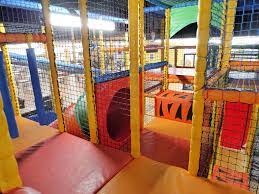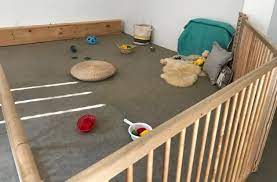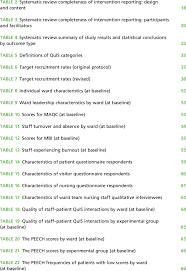
Unleashing Creativity and Fun: Exploring the Magic of Play Areas
The Importance of Play Areas for Children’s Development
Play is an essential part of every child’s life. It is through play that children learn, explore, and develop important skills. One of the best ways to provide children with a dedicated space for play is by creating a play area.
A play area is a specially designed space that offers a range of activities and equipment to engage children in active and imaginative play. These areas can be found in parks, schools, daycare centers, and even in some homes. Let’s take a closer look at why play areas are so crucial for children’s development:
Physical Development:
A well-designed play area provides opportunities for children to engage in various physical activities such as running, jumping, climbing, and swinging. These activities help develop their gross motor skills, improve coordination, balance, and strength.
Social Interaction:
Play areas encourage social interaction among children. They learn how to share, take turns, cooperate, negotiate conflicts, and develop friendships. Through group play activities like tag or team games, children learn important social skills that will benefit them throughout their lives.
Cognitive Skills:
Play areas stimulate children’s cognitive development by offering opportunities for problem-solving and decision-making. They can engage in imaginative play where they create scenarios and stories using their imagination. This type of play enhances creativity and critical thinking abilities.
Emotional Well-being:
Play areas provide a safe space where children can freely express themselves without fear of judgment or failure. Engaging in play helps reduce stress levels and promotes emotional well-being by allowing them to explore their emotions through role-playing or pretend-play scenarios.
Sensory Stimulation:
Play areas often incorporate sensory elements such as sand, water, or textured surfaces. These sensory experiences help stimulate children’s senses, including touch, sight, and hearing. Sensory play enhances their cognitive development and helps them make sense of the world around them.
In conclusion, play areas are not just a source of entertainment for children; they are vital for their overall development. By providing a dedicated space for play, we empower children to explore their physical abilities, develop social skills, enhance cognitive abilities, and nurture their emotional well-being. So let’s continue to support and create more play areas that allow every child to thrive!
Key Insights into Children’s Play Areas: Benefits, Developmental Contributions, Safety Standards, Age Guidelines, and Adult Participation
- What are the benefits of play areas for children?
- How do play areas contribute to children’s development?
- What safety measures should be in place in a play area?
- Are there age restrictions for using play areas?
- Can adults use the play area with their children?
What are the benefits of play areas for children?
Play areas offer numerous benefits for children’s development. Firstly, they provide a safe and stimulating environment where children can engage in physical activities, promoting the development of their gross motor skills, coordination, and strength. Secondly, play areas encourage social interaction and help children learn important skills such as sharing, taking turns, and cooperating with others. Additionally, play areas stimulate cognitive development by offering opportunities for problem-solving, imaginative play, and creative thinking. They also contribute to emotional well-being by allowing children to freely express themselves and explore their emotions through play. Lastly, play areas often incorporate sensory elements that stimulate children’s senses and enhance their cognitive understanding of the world around them. Overall, play areas are invaluable in supporting children’s holistic growth and providing them with a platform for fun-filled learning experiences.
How do play areas contribute to children’s development?
Play areas play a crucial role in children’s development by providing a dedicated space for them to engage in active and imaginative play. These specially designed spaces offer a wide range of activities and equipment that promote physical development, social interaction, cognitive skills, emotional well-being, and sensory stimulation. Through play, children can develop their gross motor skills, improve coordination and strength. They also learn important social skills such as sharing, cooperation, and conflict resolution. Play areas stimulate their cognitive abilities through problem-solving and imaginative play. Additionally, these spaces provide an outlet for emotional expression and reduce stress levels. By incorporating sensory elements, play areas enhance children’s sensory experiences and help them make sense of the world around them. In summary, play areas are essential for holistic child development as they foster growth in various aspects of a child’s life.
What safety measures should be in place in a play area?
When it comes to play areas, safety should always be a top priority. To ensure the well-being of children, several safety measures should be in place. Firstly, play areas should have appropriate fencing or boundaries to prevent children from wandering off or accessing dangerous areas. The equipment and structures within the play area should be regularly inspected for any signs of wear or damage, and repairs should be made promptly. Soft surfaces such as rubber mats or wood chips should be installed beneath play equipment to cushion falls and reduce the risk of injuries. Clear signage displaying age-appropriate usage guidelines and rules should also be visible. Additionally, regular cleaning and sanitization of the play area are essential to maintain a hygienic environment for children. By implementing these safety measures, we can create a secure and enjoyable space where children can freely explore and have fun without unnecessary risks.
Are there age restrictions for using play areas?
Yes, age restrictions are often in place for using play areas. These restrictions ensure the safety and enjoyment of all children. Play areas may have specific zones or equipment designed for different age groups, such as toddlers, preschoolers, and older children. This helps to provide age-appropriate activities and challenges that cater to the developmental needs of each age group. Age restrictions also help prevent accidents or injuries that may occur when younger children interact with equipment intended for older children. It is important for parents and caregivers to adhere to these age restrictions to create a safe and enjoyable environment for all children using the play area.
Can adults use the play area with their children?
Yes, adults are encouraged to use the play area with their children! At our play area, we believe in the importance of family bonding and creating memories together. Adults can join their children in the play area, actively participate in games and activities, and even help them navigate through different challenges. It’s a wonderful opportunity for parents and caregivers to engage with their children, strengthen their relationship, and have fun together. So don’t hesitate to jump in and enjoy the play area alongside your little ones!



